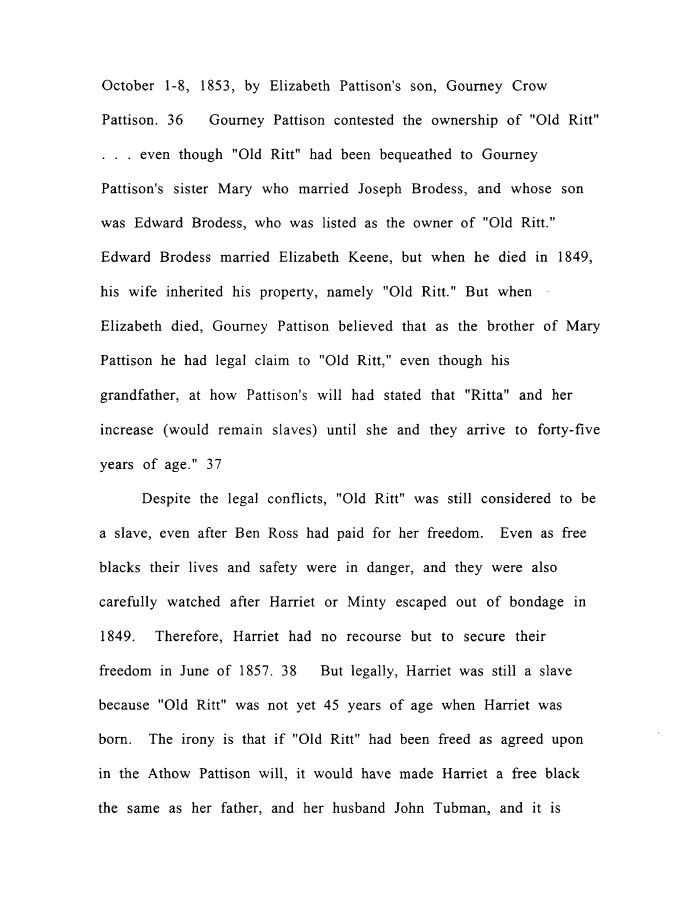 |
||||
|
TASK FORCE TO STUDY THE HISTORY AND LEGACY OF SLAVERY IN MARYLAND (Final Report) 1999/12/31 MdHR 991422 MdHR 991422, Image No: 325 Print image (43K) |
 |
||||
|
TASK FORCE TO STUDY THE HISTORY AND LEGACY OF SLAVERY IN MARYLAND (Final Report) 1999/12/31 MdHR 991422 MdHR 991422, Image No: 325 Print image (43K) |
| October 1-8, 1853, by Elizabeth Pattison's son, Gourney Crow Pattison. 36 Gourney Pattison contested the ownership of "Old Ritt" . . . even though "Old Ritt" had been bequeathed to Gourney Pattison's sister Mary who married Joseph Brodess, and whose son was Edward Brodess, who was listed as the owner of "Old Ritt." Edward Brodess married Elizabeth Keene, but when he died in 1849, his wife inherited his property, namely "Old Ritt." But when Elizabeth died, Gourney Pattison believed that as the brother of Mary Pattison he had legal claim to "Old Ritt," even though his grandfather, at how Pattison's will had stated that "Ritta" and her increase (would remain slaves) until she and they arrive to forty-five years of age." 37 Despite the legal conflicts, "Old Ritt" was still considered to be a slave, even after Ben Ross had paid for her freedom. Even as free blacks their lives and safety were in danger, and they were also carefully watched after Harriet or Minty escaped out of bondage in 1849. Therefore, Harriet had no recourse but to secure their freedom in June of 1857. 38 But legally, Harriet was still a slave because "Old Ritt" was not yet 45 years of age when Harriet was born. The irony is that if "Old Ritt" had been freed as agreed upon in the Athow Pattison will, it would have made Harriet a free black the same as her father, and her husband John Tubman, and it is |